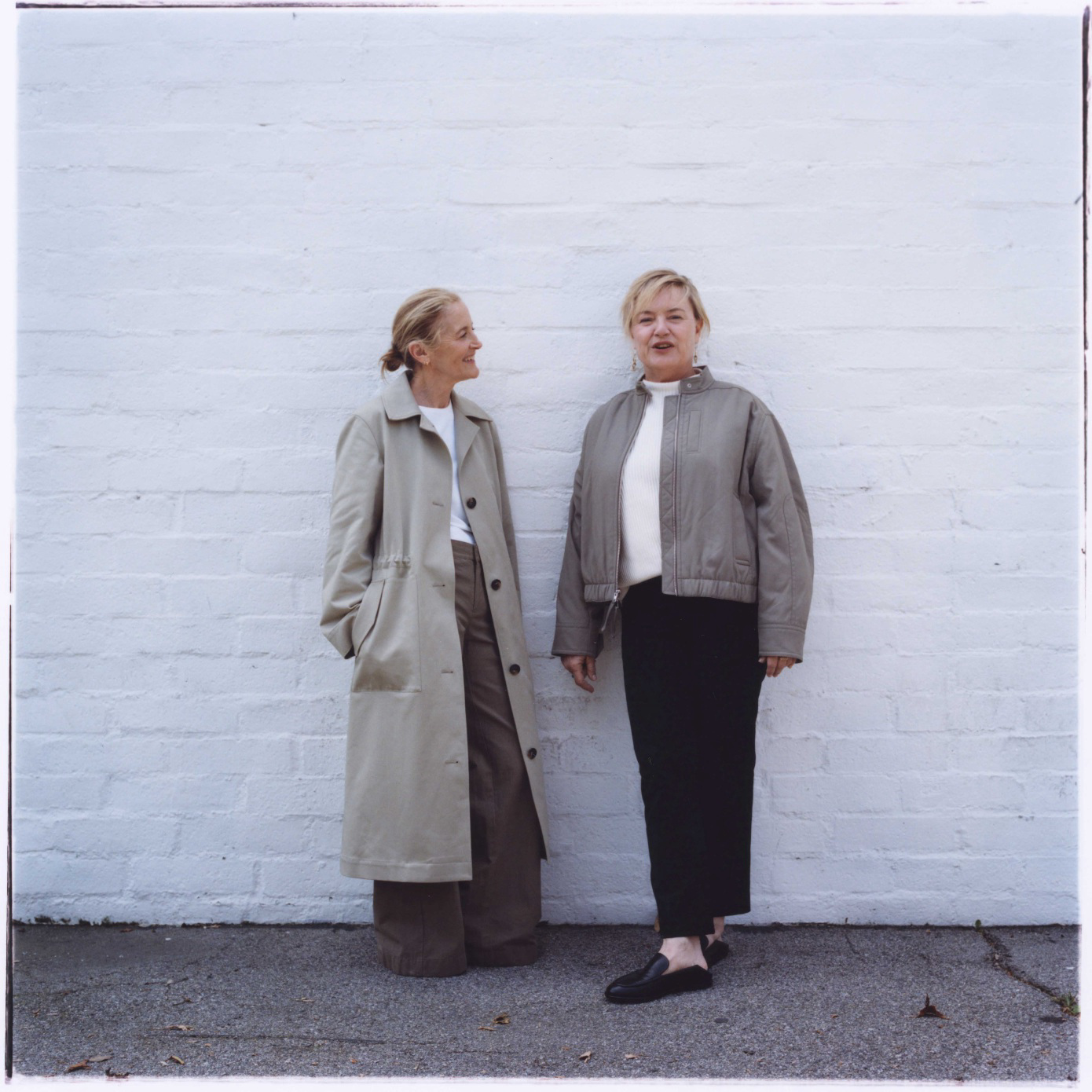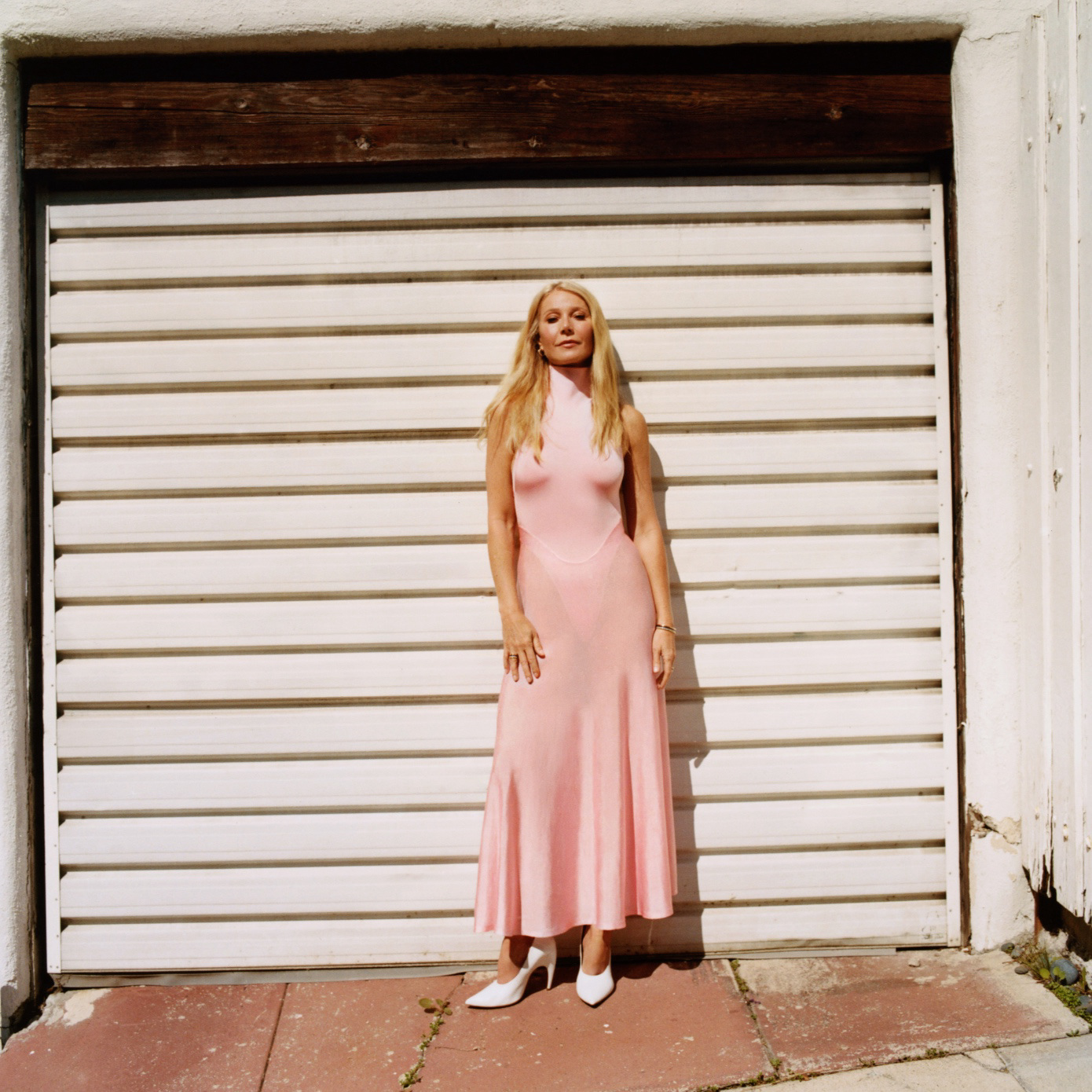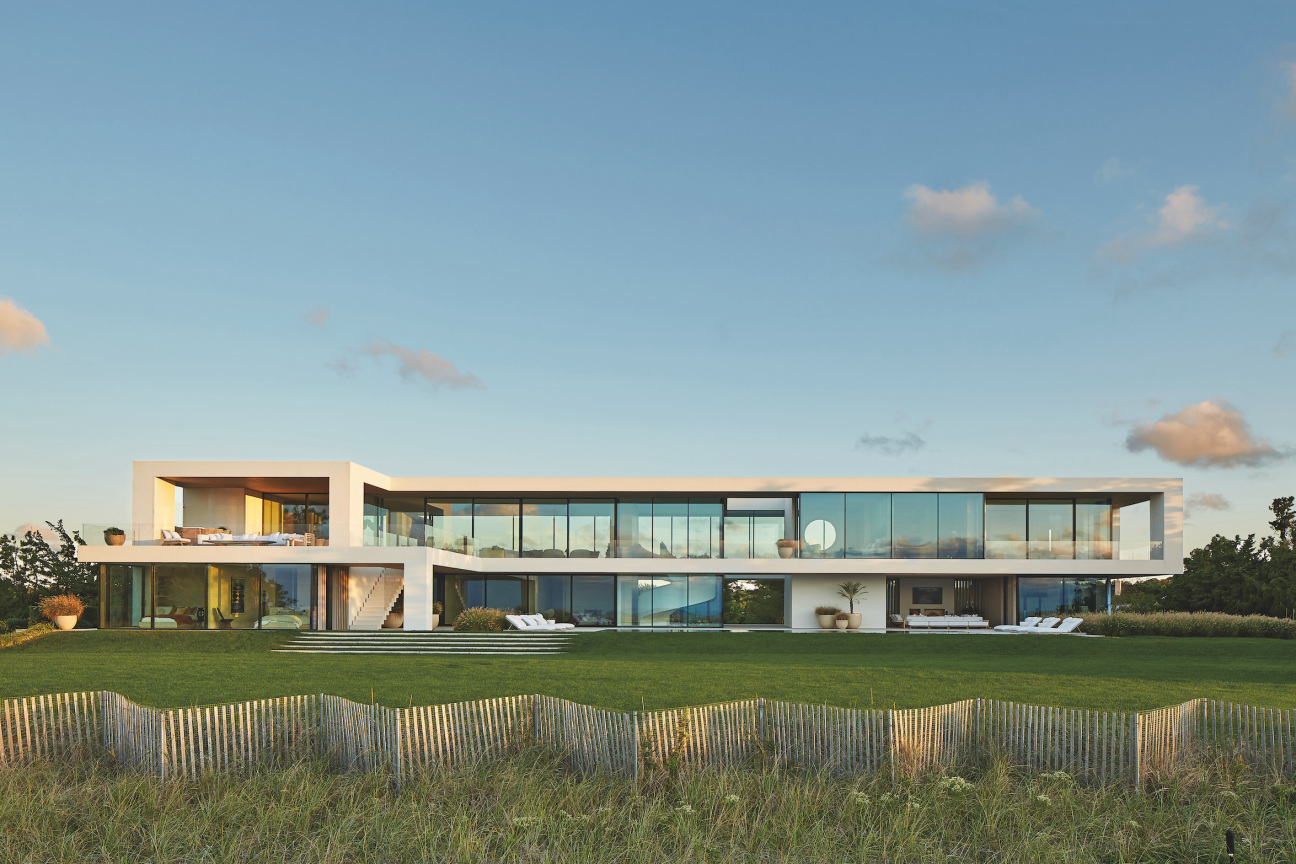
Christopher Coy
Barnes Coy Architects, Bridgehampton
For Christopher Coy, architecture begins with the site. “Everywhere you look out here, there’s the ocean, fields, hedges—that’s what it is to be here,” he says. “I use transparency in architecture to bring the natural colors of the landscape inside the house.” Over the past 30 years, the Bridgehampton-based firm he founded with his longtime friend and work partner, the late Rob Barnes, has developed a reputation for tranquil domestic oases with a modernist flair and an emphasis on light and beauty.
“Modernism is my approach, not as a style but as a guide through the process of design, and it encourages a reinvention of architecture for each project,” explains Coy. “The different sites in the Hamptons favor design that references not historical precedence but the site itself.” The architect harnesses his intimate East End knowledge for each project—he grew up summering in the area before becoming a full-time resident in the early 1990s.
To wit, Coy invites nature into his designs either visually—by virtue of the site’s surroundings—or physically, through the strategic use of glass and natural materials like wood and stone. “I have to balance both natural and zoning constraints,” he says. “The responsibility of design is that it be beautiful and useful; the intention is to create space that encourages well-being.”
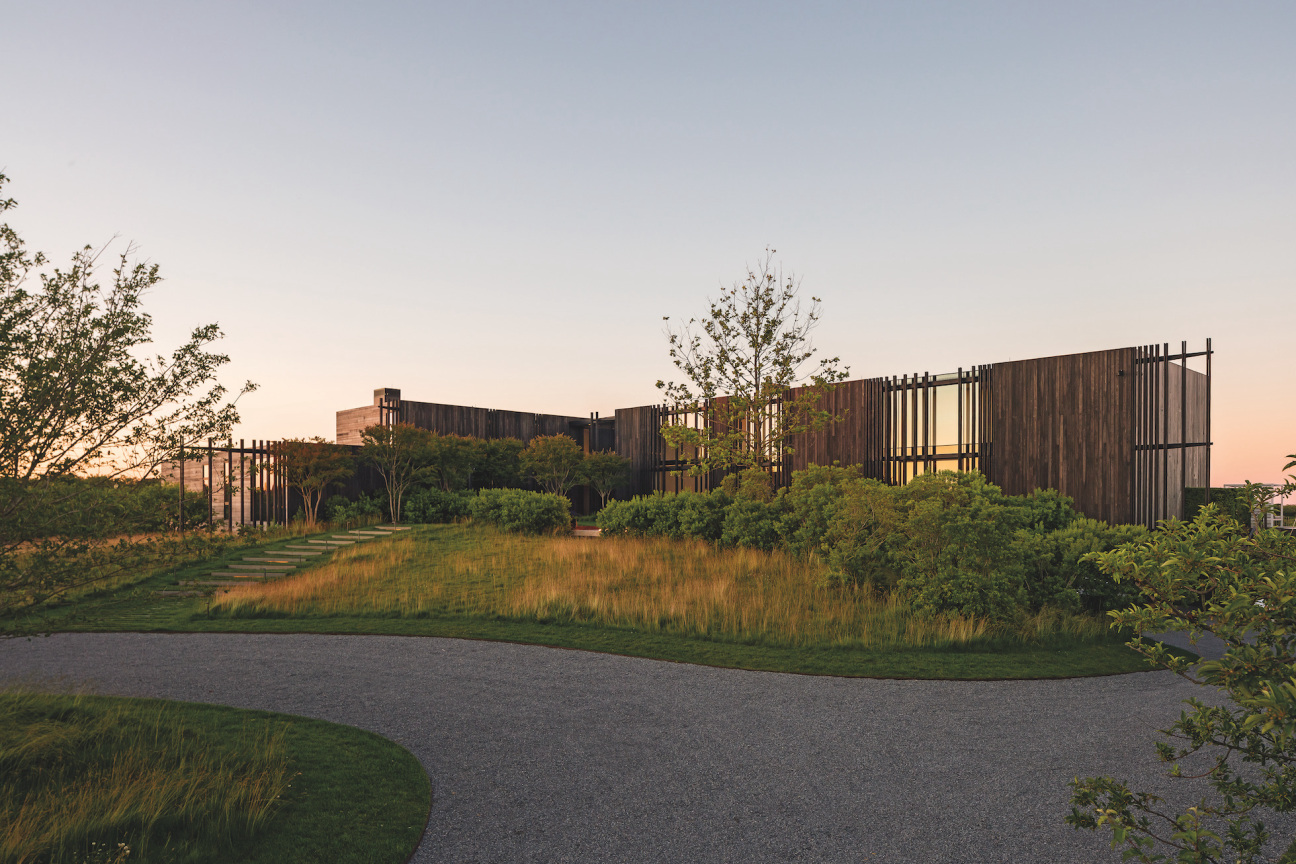
Blaze Makoid
BMA Architects, Bridgehampton
Since its founding in Bridgehampton in 2001, Blaze Makoid’s firm has been a family affair of sorts—he recalls bringing his young daughter with him to project sites on Saturdays, where “she would occupy herself by building things out of the scrap wood lying around.” Over the years, BMA Architects has become known for its sleek “legacy project” homes, which are designed to endure for generations, and the firm’s popularity has prompted the addition of offices in Miami, Lake Tahoe, and Jackson Hole, Wyoming.
Makoid’s architecture philosophy is guided by three principles: that designs are highly personal to each client, that they support social connections, and that each home is made to be lived in, “with all the messiness and chaos that entails,” he says.
The high expectations of his discerning Hamptons clientele have encouraged Makoid’s firm to take on “great creative opportunities that far exceed almost anywhere else we’ve worked,” he says. Naturally, the local landscape has been influential. “It’s hard not to be affected by the water. I don’t think I’m alone in feeling a certain calmness that its presence quietly instills.” Jack Lenor Larsen’s LongHouse Reserve in East Hampton is a frequent touchstone for him, as much for the grounds as the late textile designer’s life-as-art ethos.
Since the pandemic, Makoid says, the East End has seen many families permanently relocate from the city and invest in the region long-term—a trend he hopes will continue. “We’re also starting to see more progress in developing workforce housing, which is desperately needed,” he adds.
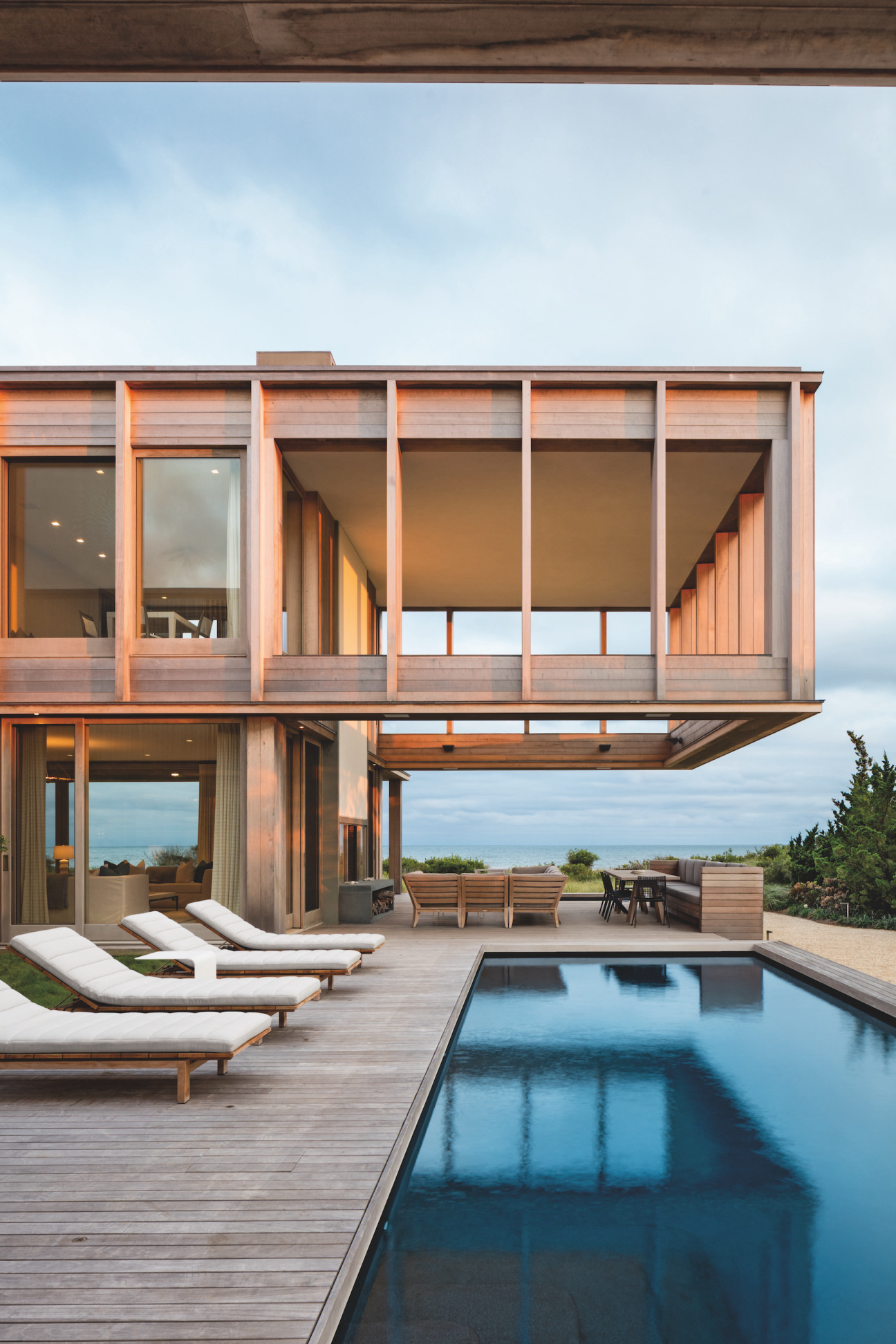
James Merrell
James Merrell Architects, Sag Harbor
“The Hamptons has been a laboratory for innovation in residential architecture for over a century, thanks to our proximity to the creative hub of Manhattan,” says James Merrell, founder of his eponymous practice. Since 1988 the firm has championed exactly that—ingenuity—with forward-thinking residential projects throughout the East End.
Merrell’s designs are undeniably cutting-edge. “We don’t begin our design process with any particular style or fashion in mind,” he explains. “If you can put a style to one of our houses by the end of a project, then I feel we have failed ... because when people can name a thing as ‘modern’ or ‘traditional,’ they stop seeing what is unique about it.”
His favorite type of client is a “reflective” one, because “an innovative design process requires reflection.” Merrell adds, “Clients who truly engage in the design conversation will be changed by that process. Every choice they face requires them to think about how they live, or want to live, and essentially who they are—and that makes it an adventure.”

